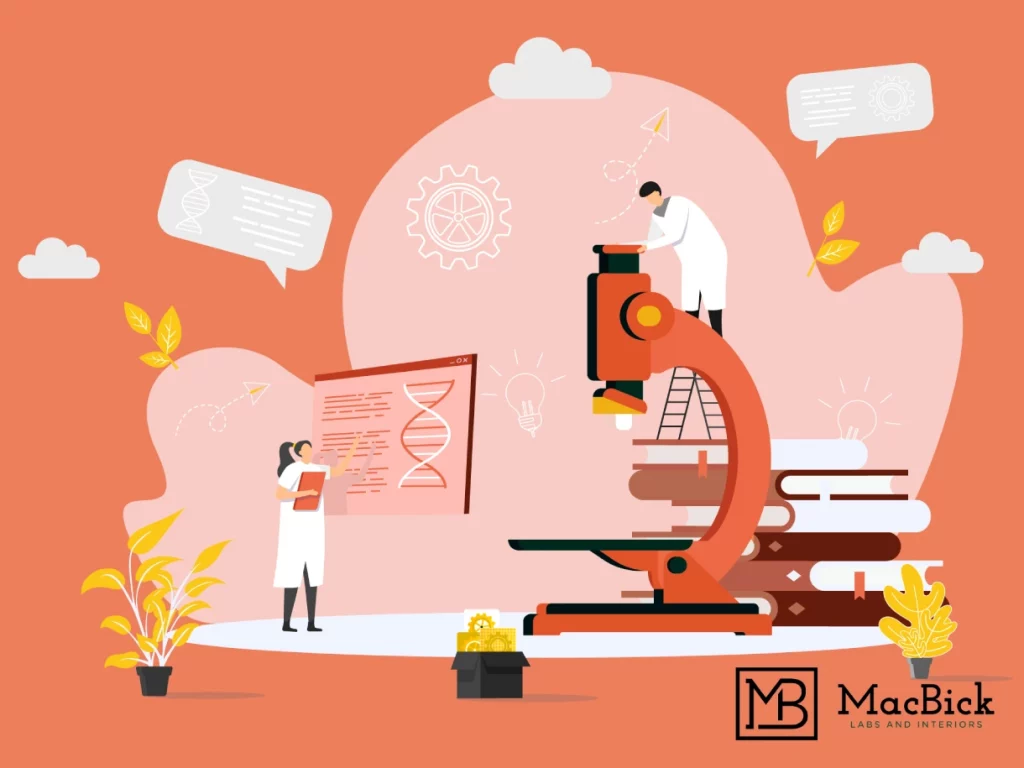In the fast-paced and dynamic field of life sciences, organizations have comprehended the importance of designing spaces that effectively support talent goals.
So, it is crucial to design spaces in research laboratories, collaborative workspaces, or other life sciences areas that combine functional efficiency, ergonomic considerations, and employee well-being.
With a plethora of companies delivering laboratory environments, you can choose MacBick to leverage cloud infrastructure and the latest tools to empower your labs. It makes organizations cultivate a workforce that retains top talent excellence in innovation and scientific breakthroughs.
Let’s delve deep into the post and explore the critical elements in designing life sciences spaces that effectively support talent goals and drive organizational success.
Crafting Spaces for Life Sciences: A Design Perspective
The design of Life sciences spaces plays a crucial role in shaping the success of organizations. A comprehensive approach ensures that the spaces reflect the organization’s broader objectives.
Integrate Design That Reflects Organizational Mission and Strategy
When integrating design in life science spaces, it is vital to consider the organization’s mission and strategy as guiding principles. The design should reflect the core values and objectives of the organization. So, creating a space that supports technical and safety needs in the lab improves overall productivity and makes the space aesthetically pleasing.
Craft Environments, both Physical and Virtual, in Alignment with Your Future Strategy
As technology advances, consider physical spaces and virtual environments when designing for life sciences. The design should facilitate seamless transitions between physical and virtual spaces and proactively incorporate flexibility and scalability to accommodate emerging technologies.
Design Spaces with a Customer-Focused Approach
In today’s customer-centric world, it is crucial to consider the needs and preferences of customers when designing life sciences spaces. The customer-focused approach creates spaces that not only support their internal operations but enhance the overall accessibility of the areas.
Six Key Steps That Set Your Life Science Spaces Apart in a Competitive Market
Creating life science spaces that stand out in a competitive market requires a strategic and thoughtful approach. Take a look at six key steps that can set your life science spaces apart:
Focus on User-Centered Design
Prioritizing the end user’s needs, preferences, and workflows when designing life science spaces is crucial. Conduct user research, gather feedback, and understand requirements catering to users’ needs. It enhances user satisfaction and productivity in the life science spaces.
Enhance Proactive Safety Protocols In Spaces
Safety is paramount in life science spaces. Implement proactive safety protocols such as incorporating a modular design for easy rearrangement of lab components, building electrical and HVAC systems, building mechanisms for scientists for best safety practices, and displaying a high standard of hygiene in the lab and office spaces.
Design Spaces with Flexibility in Mind
Create a flexible lab design by utilizing retractable power cords for ease of movement within the lab, concealing the wiring and electrical infrastructure for optimized space utilization, and installing thick floor slabs to facilitate the smooth movement of equipment throughout the lab.
Incorporate Sustainable Design Principles
Integrate sustainable design principles into your life science spaces by using energy-efficient lighting systems, incorporating natural light, implementing proper insulation, and optimizing heating, ventilation, and air conditioning (HVAC) systems. Consider using eco-friendly materials as sustainable design reduces environmental impact and enhances the overall well-being of the space.
Follow a Streamlined Process
A well-structured process enables smooth execution and minimizes delays or cost overruns. Use comprehensive design, installation, and equipment services tailored to meet the unique requirements of your space. It allows you to design the space with efficiency, safety, and peace of mind.
Consider Aesthetics and Comfort Both For Top Talents
When designing life science spaces, consider aesthetics and comfort to attract and retain top talents. Incorporate architectural features, and prioritize ergonomics, to enhance the overall ambiance and well-being of workers.
Wrapping Up
Designing life sciences spaces that support talent goals requires a holistic approach. By partnering with experienced professionals like MackBick, you can incorporate user-centered design, enhanced proactive safety protocols, and flexibility into life science spaces. It enables efficient use of the space, promotes collaboration, and supports the ever-evolving nature of scientific research.


